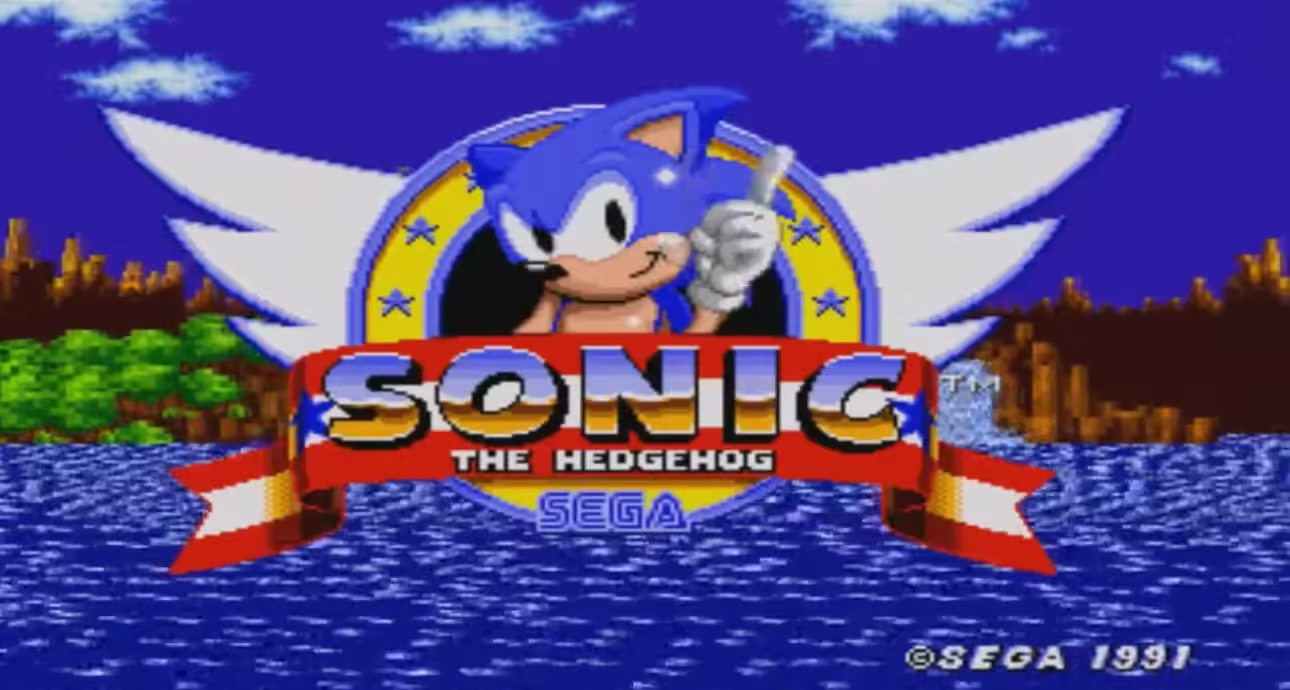Editorial: ’90s Legacy Defined a Generation – Sonic the Hedgehog
The 1990s were a pivotal decade for video games, and at the forefront was Sonic the Hedgehog. Created by Sega to compete with Nintendo’s Mario, Sonic perfectly embodied the era: fast, edgy, and cool. Unlike other cheerful and quirky mascots, Sonic had an attitude—characterized by his smirk, finger wag, and rebellious spirit. For many, Sonic represented more than just a video game character; he symbolized what it meant to be different.
When Sonic the Hedgehog was released in 1991, it represented more than just a game; it was a bold statement. Sega aimed to attract a teenage audience that Nintendo was not explicitly targeting, and Sonic became the perfect mascot for that mission. The game showcased the technical capabilities of the Sega Genesis, marking a significant advancement for its time. Speed was the core element of the gameplay—something that hadn’t been emphasized in platformers before. Unlike the careful, methodical jumping characteristic of Mario, Sonic was all about momentum. The faster you went, the more exhilarating the experience became, transforming loops, ramps, and obstacles into a thrilling blur of action.
By the time Sonic the Hedgehog 2 was released in 1992, Sonic had become Sega’s star character. The sequel was larger, and faster, introducing Tails, and allowing for cooperative gameplay that appealed to solo players and friends wanting to team up. During this period, Sonic’s popularity skyrocketed, particularly in the West, where he evolved from just a video game character into a marketing phenomenon. Sonic was everywhere—in cartoons, comics, and a wide range of toys and merchandise. Sega capitalized on his “cool” image with advertisements that portrayed Sonic as edgy and modern, while playfully contrasting him with Mario’s more traditional persona.
The pinnacle of Sonic’s success in the 1990s was arguably Sonic CD, released in 1993. The game showcased everything the series had excelled at, featuring stunning visuals, a unique time-travel mechanic, and one of the most memorable soundtracks in gaming history. Sonic had become a household name, and Sega enjoyed significant popularity. However, as the gaming landscape began shifting towards 3D, a pressing question arose: could Sonic successfully transition to this new format?

Enter Sonic Adventure. Released in 1998 for the Sega Dreamcast, this game marked Sonic’s first major venture into the third dimension, a bold move for the franchise. As the ’90s drew to a close, Sega was under pressure to deliver a hit, making the stakes incredibly high—not just for Sonic, but for Sega as a whole, with the Dreamcast representing their last chance at console dominance.
Sonic Adventure brought the series into a fully 3D world, offering larger environments, new characters, and a narrative-driven experience. Although the game had its flaws, it was groundbreaking for its time. It provided players with the exhilarating sensation of racing through vast, open spaces, allowing Sonic’s speed to be fully realized in a way that 2D could not achieve.
Sonic Adventure accomplished more than just technical advancements; it solidified Sonic’s status as a hero not only of the 16-bit era but also of the emerging 3D age. The game featured vibrant hub worlds, a catchy soundtrack, and a diverse mix of gameplay styles, marking a true evolution for the franchise. It was no longer solely about speed; it was about creating a universe filled with Sonic, his friends, and the ever-present threat of Dr. Robotnik (now commonly known as Eggman). This game pushed Sonic beyond his fast-paced platformer origins into a more ambitious realm, demonstrating that he could evolve alongside the gaming industry.

The transition to 3D wasn’t without its challenges. Sonic Adventure faced notorious issues with its camera and controls, and while it achieved commercial success, it hinted at some difficulties the franchise would encounter in the 2000s. However, for fans who grew up in the ’90s, Sonic Adventure represented a bold, albeit imperfect, advancement. It demonstrated that Sonic could evolve with the times while still retaining the core elements that made him so beloved—his speed, attitude, and ability to engage players.
In the ’90s, Sonic was more than just a video game character; he was a cultural phenomenon. From the pixel-perfect worlds of the Genesis to the expansive landscapes of the Dreamcast, Sonic defined what it meant to be fast and cool during a time of rapid change in the gaming industry. Even as Sega’s fortunes declined, Sonic’s legacy as the ultimate mascot of the ’90s was already firmly established.
SEGA® Genesis Classics Game Information
Price: $29.99
Publisher: SEGA of America, Inc.
Developer: D3T Limited
Director(s): Various
Producer(s): Various
Platform: Microsoft XBox One & Series S|X, Nintendo Switch, Sony PlayStation 4 & 5, Steam
Purchase Playstation Store
Purchase Nintendo Online
Purchase Microsoft XBOX Store
Purchase Steam
Listen to the SEGA SOUND TEAM‘s work on Spotify.
Do you have a news tip or wish to contact us directly? You may reach us at hello@robotsoverdinosaurs.net.










